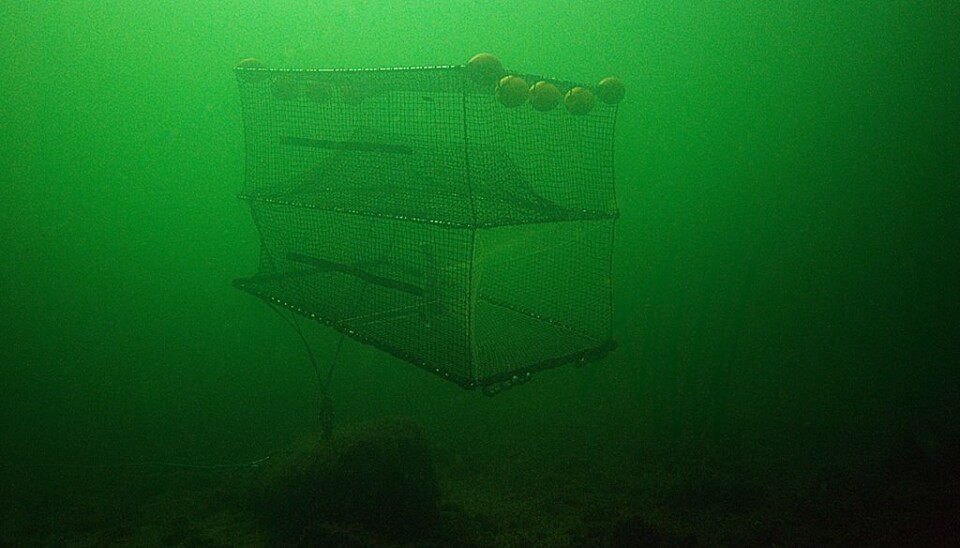
Catching Atlantic cod in green light
Using fish pots and green light, Swedish fishermen want to prevent seals from stealing their catch.
In parts of the Baltic Sea, there are so many seals that fishermen are struggling.
Grey seals are intelligent enough to understand that fish are helpless when they are caught in nets: an easy meal.
Difficult for fishermen
In many places it is almost impossible to use traditional tools, especially in small-scale fishing for cod in the Swedish archipelago.
This is the background for an effort by the Swedish University of Agricultural Sciences (SLU) to develop alternative fishing gear – such that seals cannot get at the fish.

Using fish pots is one possibility. The pot is a gentle tool, and seals cannot get hold of fish that have ended up in the trap. The fish can be kept alive in the trap, reaching consumers as fresh as possible.
The problem of pot fishing is that it is not very effective: the fishermen can’t trap enough fish.
That is why the researchers at SLU have gone one step further. They have found that green light increases efficiency. Pots with green, battery-powered light attract more cod.
Known techniques, new species
“Fishing by light has been used for centuries,” says Andreas Bryhn, a researcher at SLU’s coastal laboratory.
“The method works differently on the various species of fish, and we do not know why they are attracted to light. Maybe the fish are simply curious, or maybe it’s because food is more visible in front of the light source,” Bryhn says.
But scientists know that cod use sight to find food and that they have eyes that are particularly sensitive to blue-green and yellow-green light. That made it logical to try green light in the pots.
In an experiment in Hanöbukten, outside Blekinge in southern Sweden, experienced fishermen mounted the green lights in half of their pots. Pots with and without light were used at the same place and the same time in order to provide comparable results.
Larger fish
The green lights did not affect all of the fish, but for a fisherman the result could hardly have been better: the method did not work for small cod, typically below the minimum target of 38 centimetres. The catch of cod of legal minimum length was typically 80 percent higher when the fishermen used green light.
“Using green light in the pots should increase the catch in areas where there are a lot of seals. So far, our cooperation with fishermen has been successful and now we are going to continue in such areas,” says SLU researcher Sara Königson.
According to the university, this study is the first in the world to show that cod can be caught with lamps. Previous studies have shown that it is effective for herring, mackerel and anchovies. In Norway the method has been controversial; it is regulated and sometimes prohibited.
Stable along the Norwegian coast
Seal populations and seal hunting along the Norwegian coast are controversial topics: fishermen see the seals as competitors and want to keep the population down while conservationists are keen to maintain a viable seal population. But the conflict became more visible and made more headlines a few years ago.
“Apart from the coastal cod, fish stocks are in good condition. The result is less conflict,” says oceanographer Arne Bjørge at the Institute of Marine Research in Norway.
So far, the fish stocks have not led to any large increase in the population of the seal species that compete with fishermen.
“The population of grey seals is increasing somewhat. Twelve hundred baby seals are born along the Norwegian coast each year. As for harbour seals, we have 7,000 along the coast, and the population seems to be relatively stable,” Bjørge says.
------------
Read the Norwegian version of this article at forskning.no
Translated by: Lars Nygaard









